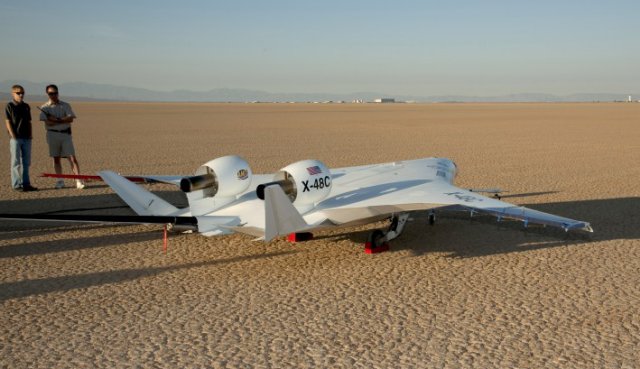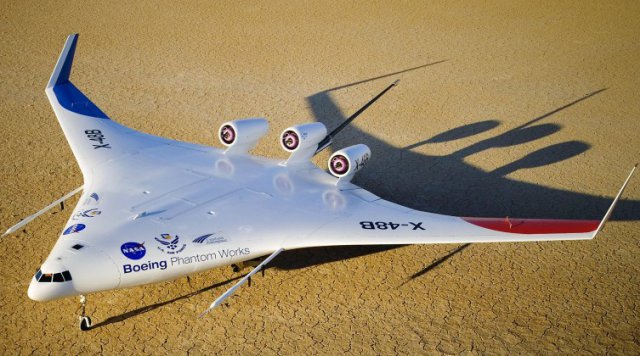 The X-48 is a Blended Wing Body aircraft, which is something of a halfway house between a flying wing and a conventional airplane (i.e. one with a distinct fuselage and wings).
The X-48 is a Blended Wing Body aircraft, which is something of a halfway house between a flying wing and a conventional airplane (i.e. one with a distinct fuselage and wings).
Unlike a flying wing, a Blended Wing Body aircraft has a fuselage, though its squashed form helps to generate lift. The wings, predominantly for stability, do not house crew or cargo.
It’s thought that the Blended Wing form offers increased fuel efficiency and reduced noise compared to conventional aircraft. Absent from more recent rhetoric are the potential military applications of such an aircraft, which have previously prompted interest from the US Air Force Research Laboratory.
The third incarnation in the program, the X-48C builds on the foundations laid by the successful X-48B configuration, which made 92 flights between 2007 and 2010. The design changes have been focused on reducing the noise of the aircraft at ground level, a development that would be of clear benefit to communities under flight paths should Blended Wing Body aircraft one day see commercial use.
 The most obvious change is the reduction of the X-48B’s three engines (generating 50 pounds/222 newtons of thrust each) to two heftier engines (each capable of generating 89 pounds/396 newtons of thrust). A little more subtle is the relocation of the wingtips from the main wings to the newly-created tail section and aft deck, which protrudes about 2 feet (60 cm) from the back of the plane.
The most obvious change is the reduction of the X-48B’s three engines (generating 50 pounds/222 newtons of thrust each) to two heftier engines (each capable of generating 89 pounds/396 newtons of thrust). A little more subtle is the relocation of the wingtips from the main wings to the newly-created tail section and aft deck, which protrudes about 2 feet (60 cm) from the back of the plane.
The X48-C is about the same size as its predecessor, with a wingspan of a little over 20 feet (6 meters) and a weight of 500 pounds (227 kg). Both the X-48B and X-48C are 8.5-percent scale prototypes of a 40-foot wingspan aircraft that could yet come. Its estimated top speed is 140 mph (225 km/h), and its ceiling is 10,000 feet.
The X48-C, built by Cranfield Aerospace in the UK, first took to the skies in August of last year. It flew for the eighth time in November, more notable because it was the hundredth flight of the X48 programme as a whole. It is expect to fly another 20 times before its stage of the program concludes.
Source: Gizmag
